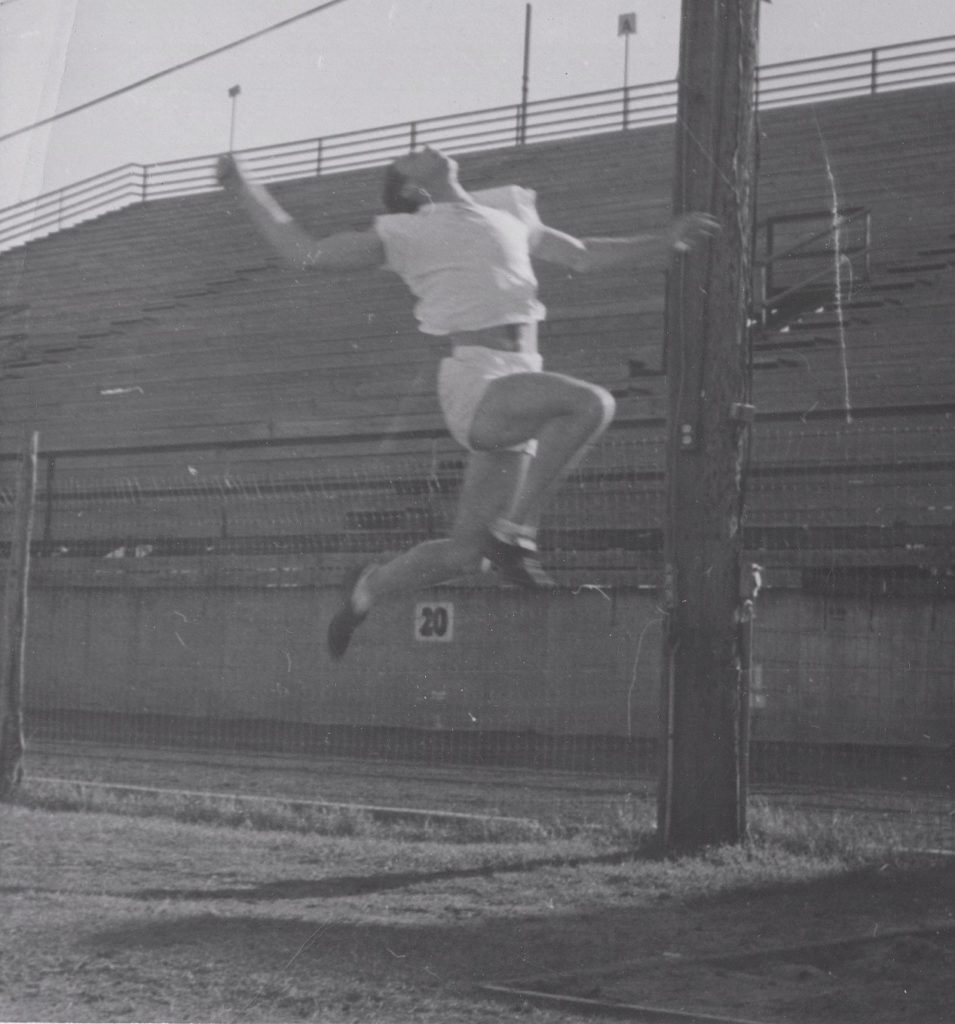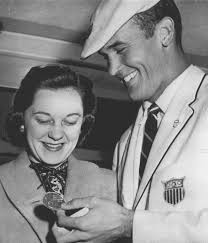(Editor’s note: Pacific Palisades resident Bob Vickrey is such a good writer that I loved reading more about his family and how it tied into Bobby Morrow. I also didn’t know about Morrow, but found his history interesting. I hope you enjoy the story as much as I did.)
By BOB VICKREY
I grew up in Texas in a family of track and field stars, so it was only natural for this twelve-year old boy to become enamored with Olympic champion sprinter Bobby Morrow, who became the “Golden Boy” of his sport during the Eisenhower era.
Morrow won three gold medals in the 1956 Olympic Games in Melbourne, Australia, and soon became a household name across the country. He was named “Sportsman of the Year” by Sports Illustrated (beating out Mickey Mantle), and appeared on “The Ed Sullivan Show.”
Morrow died in San Benito, Texas, on May 30 at the age of 85, near Harlingen, the town where he’d grown up as the son of a cotton and carrot farmer. His outstanding high school career in track and football drew the interest of Abilene Christian College (now University.) Bobby was humble and handsome, and didn’t smoke or drink, so his clean-cut image fit perfectly with the school’s Christian ideals.
During his freshman year at ACC, he won the Amateur Athletic Union championship in the 100-yard dash and defended his AAU title the following year. He also won the 100 and 220-yard dash events at the NCAA Championships. Suddenly, the track and field world became aware of Morrow’s sprinting dominance as the Melbourne Olympic Games drew near.
Morrow’s recent death brought back memories of my boyhood, and how I idolized great sports heroes. I had already known two track and field stars who lived under my own roof in the Houston suburb of Galena Park—my father and my older brother.
My dad was one of the fastest sprinters in East Texas during the 1920s and was a championship long jumper in Texas high school track circles. So, it was no surprise when his eldest son followed in his footsteps and became an accomplished high school and college track star.
During that same era when Morrow competed, my brother Ray emerged as a fine sprinter in his own right at Baylor University, and their record-setting 440-yard relay team would eventually compete head-to-head against Morrow’s Abilene Christian team. But Ray’s specialty back then was the long jump, in which he won two Southwest Conference Championships, and was once named Most Outstanding Performer at the annual SWC track meet.
Ray ran the third leg on Baylor’s 440-yard relay team at the Kansas Relays in 1956 that battled Texas to a photo finish in world record-setting time. The race was initially called a dead heat, but an hour later, it was determined that Texas anchorman J. Frank Daugherty had nipped Baylor’s Del Shofner at the finish line, and Texas was awarded the world record of 40.1.
Baylor’s time was adjusted by a tenth of a second to 40.2, which also broke the existing world record held by the 1954 Texas team. This represented the only loss to the Longhorns among the six races in which the two teams faced off that year.
In a recent phone conversation, legendary former Baylor track coach Clyde Hart reflected upon that team and told me that “no one could run the curve like Ray Vickrey.” Coach Hart had been a key member of that record-setting team and was one of the fastest sprinters in school history. (He recorded a 9.3 in the 100-yard dash.)
In their only relay matchup with Abilene Christian at the prestigious “Meet of Champions,” Baylor’s first three runners managed to build such a lead that Morrow was unable to overcome the deficit on his anchor leg. Hart said, “I have no idea how we managed to beat that talented ACC team, but somehow we did.”

This 1956 newspaper photo captures the Baylor vs. Texas 440 relay race in which a world record was set.
The mythology of my brother continued to grow after I heard Coach Hart’s stories. The desk drawers in the bedroom I had inherited from Ray were overflowing with medals and trophies that had accumulated during his spectacular track career. I had always wished I could have been there to see him compete and receive those awards.
At some point in my teenage years, I began to realize the many accomplishments my brother had achieved in sports, but more importantly, I became aware of the admiration his peers had for him as a person of integrity and character. My focus on hero adulation had gradually shifted to someone in my own family.
Bobby Morrow retired from track in 1960, after being left off the U.S. Olympic team that year. He had suffered a leg injury the previous year but was still competing at a high level with fellow teammates. Many of his friends said the decision had left him feeling betrayed and disillusioned afterward.
Morrow returned to his roots in the Rio Grande Valley where he once again took up farming—a job he said he had missed during his years away from working the soil. As he retreated from the public eye, he was often asked for autographs and newspaper interviews, and even occasionally relented to giving motivational speeches. He was still known for flashing that million-dollar smile of his that had once graced the cover of “LIFE” magazine.
After graduation from Baylor, my brother Ray entered Southwestern Theological Seminary and became a full-time Baptist minister after serving for eight years as executive director of the Baylor Alumni Association. He served 26 years as Senior Pastor of Royal Lane Baptist Church in Dallas, Texas, and retired from the ministry in 2008.
However, just before his job at Baylor began, Ray enjoyed one last hurrah on the track and field circuit in 1960, when he competed in the Southern AAU Championships, in which he had previously been a three-time triple jump champion. He was also invited to compete in the “Meet of Champions” in Houston that same year.
He medaled in both track meets in the long jump and triple jump events. But the difference this time was that I was there in the grandstands to watch my boyhood hero accept his awards on the victory stand.
In 2002, Ray was inducted into the Baylor University Athletic Hall of Fame.
Bob Vickrey is a longtime resident of Pacific Palisades whose columns appear in several Southwestern newspapers including the Houston Chronicle and the Waco Tribune-Herald. You can read more of his columns at his website: http://bobvickrey.net/




Wonderful story…….